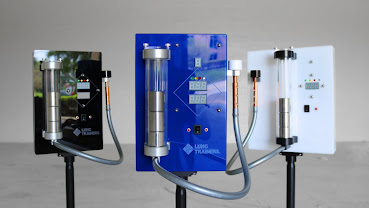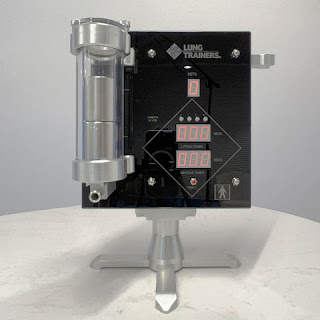Fundamentals of Yoga Breathing Exercises
One of the most typical comments I get from others in my yoga class, particularly yoga beginners, is that yoga breath exercises are the most helpful, but also the most difficult set of asanas to master.
When many traditional and alternative therapies refer to breathing as the fundamental essence of being alive, they are correct. Breathing is one of life's main rhythms, which also include sleep and wakefulness, birth and death, and light and dark.
With this in mind, it's no surprise that much research has been conducted on the impact of breathing on several parts of our lives, including health, emotional well-being, relationships, and the state of society as a whole.
In yoga, the breath is referred to as prana, broad-reaching energy that can connect the body, mind, and spirit in a state of harmony that is the foundation of yoga and meditation. The yoga breathing exercise for asthma ,useful for and therefore, becomes a collection of yoga breathing techniques aimed at maximizing the universal energy that pervades all of us.
Yoga practitioners think that this state of harmony is natural and that many factors of life draw us apart from our inner peace. One of the most basic foundational approaches we may employ to control and even remove the impact external pressures have on our general health and well-being is yoga breathing exercise.
Take, for example, our fight-or-flight reflex. The innate fight or flight response served our forefathers well, surfacing only occasionally to keep them safe. Today, most of us are plagued by a near-permanent fight or flight response, which causes digestion issues, high blood pressure, artery degeneration, and a slew of other stress-related ailments.
Breaking through the mind-body response and refocusing us on our natural state of internal harmony is how yoga breathing techniques address this chronic stress response.
BASICS OF YOGA BREATHING EXERCISE
The good news is that we don't need to master yoga breathing exercises to reap the benefits; nonetheless, yoga breathing techniques must adhere to a few basic rules.
Breathe deeply and slowly. First and foremost, we must grant ourselves permission, time, and incentive to exercise to enhance our breathing. Yoga breathing techniques have been shown to help us master control over our minds and bodies, but only if you commit to a consistent program over several months will it work.
Become familiar with the physiology of breathing. Changing the speed of inhalation and exhalation, as well as adjusting the depth of breathing exercise, are all part of advanced yoga breathing techniques. The purpose of yoga breathing (pranayama) is to calm the mind and heart while also increasing the oxygenation of your body's cells, commonly known as respiration. To master pranayama, visualize the expiration of toxins and gases while visualizing the inhalation of clean, pure oxygen fueling your body.
Become conscious of your body's breathing. The role of your body, your belly, your ribs, your thorax, and your chest, as well as your lungs, in the yoga breathing process, is emphasized in yoga breathing practices. When practicing deep breathing, for example, the puffing out of the belly is an important indicator that you are taking in enough air to achieve optimal oxygenation. Only by becoming aware of your breathing rhythms in any activity at any time of day can you truly master pranayama yoga breathing.
Concentrate on both inhaling and exhaling. When I initially started practicing yoga breathing techniques, I concentrated almost totally on the inhalation, making sure I was taking a deep breath and paying no attention to how I exhaled. Exhalation is just as vital as inhalation in yoga breathing techniques. Instead of a jerky, uncontrolled release, focus on a continuous, controlled release.
Long-term health benefits of yoga breathing exercises are thought to be substantial, but I can tell you that the short-term boost in energy, focus, peace, and brainpower you get from just a 5-minute yoga breathing technique is incredibly beneficial to your overall well-being, productivity, and happiness.
Source Url :- https://sites.google.com/view/lungtraino/home


Comments
Post a Comment